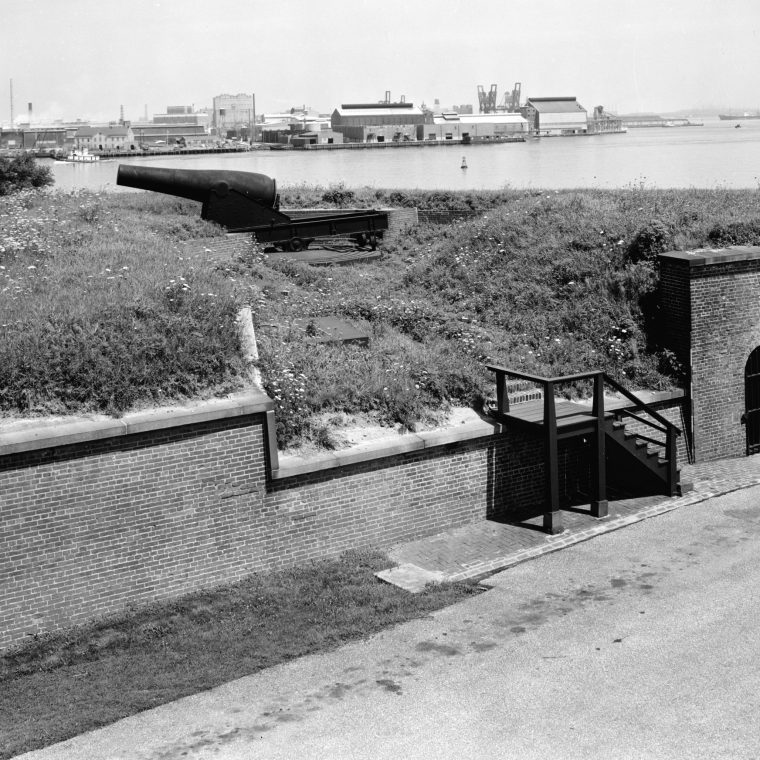That’s the ravelin east of Fort McHenry in Baltimore, protecting the sally port. In ordinary language, it’s a mini-fort that protected the main entrance to the main fort. That picture is from HABS, but Marie and I both worked at McHenry about thirty years ago, when employed by another firm. McHenry is famous for exactly one thing: a winning battle against ships of the British navy in September 1814, which helped put an end to the War of 1812 and inspired some mediocre poetry that became the Star Spangled Banner.
The fort was used by the army from 1798 until after World War I. It was then turned into a national park but briefly reverted to military use by the Coast Guard during World War II. The construction of what most people, including me, think of as the fort proper – the bastions and the connecting curtain walls – resembles the ravelin seen above: a big earth berm faced with brick on the sides. The smaller buildings within the fort are mostly of ordinary brick and wood construction; the bombproof buildings have brick-vault roofs.

Why discuss this? The number of earth-berm, brick-faced structures in the US is very small, so I have to generalize. What we know about brick, and what people knew about brick in 1798, suggests this structure should be a huge maintenance problem. Brick and mortar both undergo accelerated aging when in constant contact with water; a shoreline fort where all of the brick facing is in contact with wet earth should fall apart. The short answer is that it does, but in a manageable fashion. The entire time that the army was there – more than 120 years – they dealt with the gradual and random collapse of individual bricks or small areas of mortar by cutting them out and replacing them. The fort walls were never static, were never done. Rather, they were always in a state of simultaneous decay and rebuilding, and therefore were in equilibrium.
There is a popular misconception that the purpose of repair is to get a building back to its original state, or to a point where a similar effort will not be necessary again. Both are impossible. The goal, in ordinary terms, is to kick the can down the road. Maybe we can put off the next intervention thirty years, maybe only ten, but we can move it into the future and that means we’re extending that equilibrium between decay and rebuilding.




You must be logged in to post a comment.